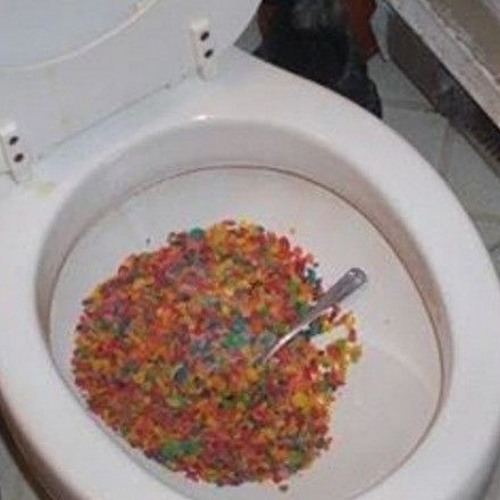Are You Allowed to Flush Food in the Toilet?
Are You Allowed to Flush Food in the Toilet?
Blog Article
They are making several good pointers regarding Flushing Food Down the Toilet? as a whole in this content down below.

Introduction
Lots of people are commonly faced with the dilemma of what to do with food waste, particularly when it comes to leftovers or scraps. One usual question that occurs is whether it's okay to flush food down the bathroom. In this write-up, we'll look into the reasons that people may think about purging food, the consequences of doing so, and alternative techniques for correct disposal.
Reasons why individuals might take into consideration flushing food
Lack of recognition
Some individuals may not understand the possible injury caused by flushing food down the toilet. They might incorrectly believe that it's a harmless practice.
Convenience
Flushing food down the commode might appear like a fast and simple service to getting rid of unwanted scraps, especially when there's no neighboring trash can offered.
Laziness
In some cases, individuals might simply pick to flush food out of sheer laziness, without considering the consequences of their activities.
Repercussions of flushing food down the bathroom
Environmental impact
Food waste that winds up in rivers can contribute to pollution and damage water ecological communities. In addition, the water made use of to purge food can strain water resources.
Plumbing concerns
Purging food can lead to stopped up pipelines and drains, creating costly pipes repairs and hassles.
Types of food that ought to not be purged
Fibrous foods
Foods with fibrous appearances such as celery or corn husks can obtain entangled in pipes and cause obstructions.
Starchy foods
Starchy foods like pasta and rice can soak up water and swell, leading to blockages in pipelines.
Oils and fats
Greasy foods like bacon or cooking oils need to never be purged down the commode as they can strengthen and create blockages.
Appropriate disposal methods for food waste
Making use of a waste disposal unit
For homes equipped with garbage disposals, food scraps can be ground up and purged via the plumbing system. Nonetheless, not all foods appropriate for disposal in this way.
Recycling
Certain food packaging products can be reused, decreasing waste and reducing environmental impact.
Composting
Composting is an environment-friendly method to take care of food waste. Organic materials can be composted and utilized to enrich soil for gardening.
The importance of appropriate waste management
Decreasing environmental harm
Appropriate waste management techniques, such as composting and recycling, help lessen contamination and maintain natural resources for future generations.
Protecting plumbing systems
By preventing the technique of flushing food down the toilet, home owners can stop expensive plumbing fixings and keep the honesty of their pipes systems.
Verdict
Finally, while it may be appealing to flush food down the toilet for convenience, it is necessary to comprehend the prospective effects of this activity. By adopting correct waste monitoring methods and getting rid of food waste responsibly, people can add to healthier plumbing systems and a cleaner setting for all.
FLUSH FOOD DOWN THE TOILET?
FLUSHING FOOD CAN CAUSE BLOCKED DRAINS IN YOUR HOME
All of the plumbing fixtures in your home are connected to the same sewer pipe outside of your home. This outdoor sewer pipe is responsible for transporting all the wastewater from your home to the Council sewer mains. Even small pieces of food that go down the kitchen sink can cause problems for your sewer. It should therefore be obvious that flushing larger bits of food, such as meat, risks a clog in either the toilet itself or the sewer pipes. Flushing greasy food is even more problematic because oil coagulates when it cools, coating the interior lining of your pipes.
THE TOILET IS NOT A BIN
Food isn’t the only thing that people shouldn’t be flushing down the toilet. People use the toilet to dispose of all kinds of things such as tampons, makeup wipes, dental floss, kitty litter and even underwear. Water goes to great lengths to educate residents about the high costs and stress placed on wastewater treatment systems simply from people flushing the wrong stuff down the toilet. It costs taxpayers millions of dollars each year, and homeowners thousands in blocked drain repairs.
FLUSHING FOOD IS A WASTE OF WATER
Flushing food is a waste of our most precious resource - water. In June this year Level 1 water restrictions were introduced to protect water supply from drought conditions. Much of New South Wales continues to be affected by prolonged drought with recent figures revealing up to 97 per cent of the state remains in drought. Depending on whether you have a single or dual flush toilet, every single flush uses between five and 11 litres of water. In the current climate this is a huge amount of water to be wasting on flushing food that should be placed in the bin (or better yet, the compost).
https://www.jabplumbingsolutions.com.au/blog/can-you-flush-food-down-the-toilet

As a person who reads on What Can Happen If You Flush Food Down the Toilet?, I think sharing that excerpt was sensible. Sharing is good. Helping people is fun. Kudos for being here. Revisit us soon.
This Page Report this page